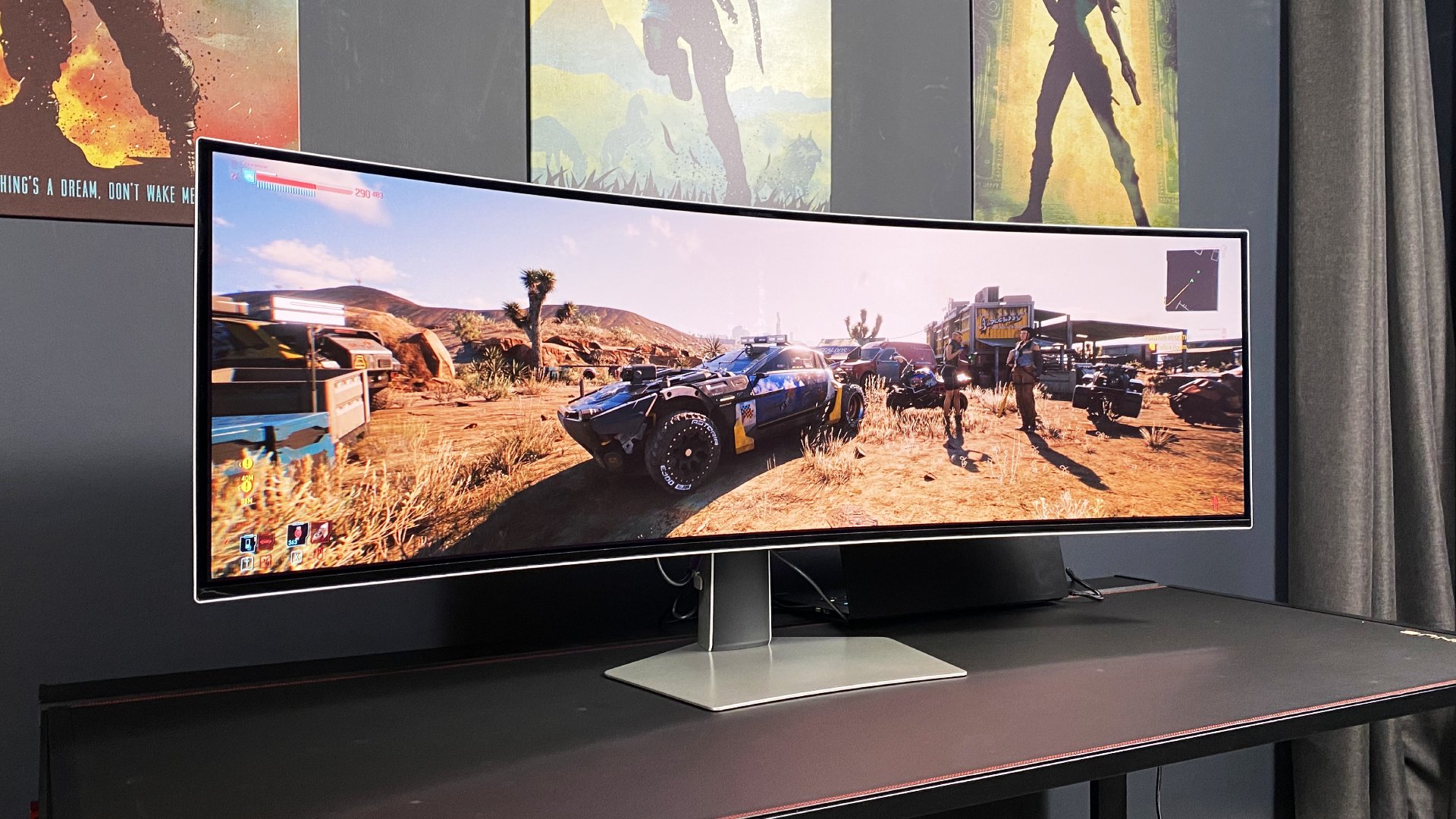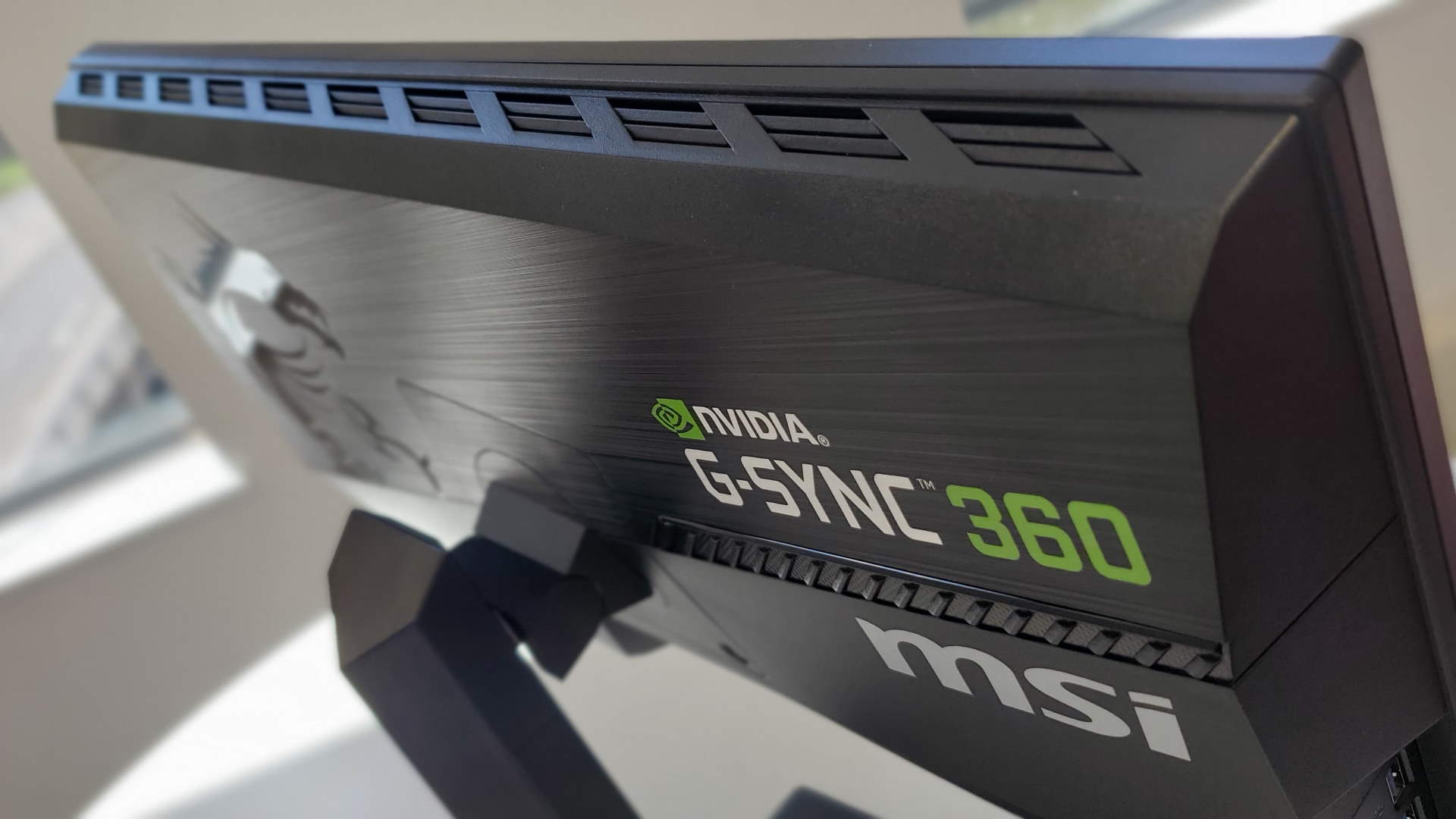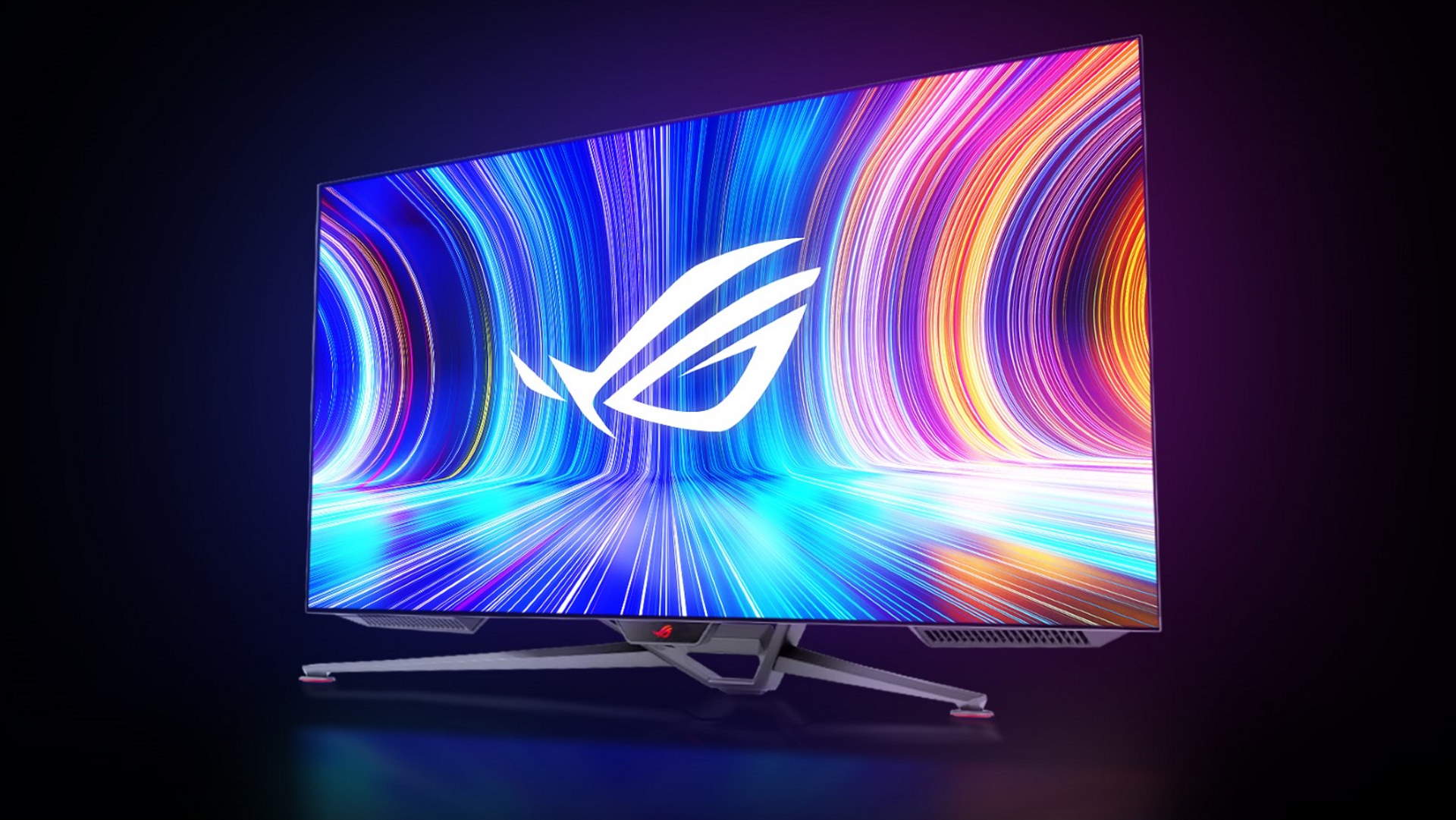How to pick the best Black Friday gaming monitor deals for you
It's a perfect time to treat your eyes and wallet to a quality new screen.

Black Friday officially starts on November 24 and for many of us that means a chance to grab a nice monitor upgrade. There will be a huge array of various models on offer but not all of them will be worth your attention. So to help you sift through everything and spot the real deals from the real duds, here are some of my tips and hints on choosing the right gaming monitor during this season of sales.
If you've been using your current monitor for a good few years, then you'll be pleased to know that display technology has improved a lot recently. Where high refresh rates and resolutions used to be prohibitively expensive, these features are now available at far more reasonable price points.
However, some models might seem really cheap because they're shown compared to an older price, one that was artificially raised before the sales. To check for this, I use camelcamelcamel as a browser extension and with one click, it shows Amazon's prices over time. This way you can easily spot if the price drop is a genuine discount or just a means to shift old stock.
- We're curating all the best Black Friday PC gaming deals right here.
Regardless of what gaming monitor you want to get, there are several aspects to all of them that you should first consider before handing over your money. Although I'm listing them separately, they're really all linked together.
Which resolution should I choose?
This is how many pixels are displayed by the monitor and it has the biggest impact on the fidelity of your gaming. Screen resolution is typically listed by a standard notion: 1080p, 1440p, and 4K. There are so-called Ultrawide versions of these, too, where the screen will have the same vertical resolution as the standard ones, but the number of horizontal pixels is much greater.
Put simply, the higher the resolution, the better your games will look. However, the more pixels that need to be coloured in, the more will be asked of your graphics card. For example, if you're currently getting 60 fps at 1080p, you'll get a much lower frame rate using 4K because there are four times the number of pixels on screen. Unless you've got a high-end, expensive graphics card, I recommend you stick to 1440p, as it's the best balance between visual fidelity and gaming performance.
That said, it's worth bearing in mind that a good monitor can last for many years and you could end up going through one or two GPU upgrades in that time. So it might be worth thinking of the future, as you can always set your games to run at a lower resolution. Playing at 1080p on a 1440p monitor won't look quite as good as on a native 1080p monitor, but it's not a bad compromise.
What's a good refresh rate?
Monitors will update the screen's output multiple times every second and this is called the refresh rate. I don't recommend anything lower than 100Hz these days and in the sales, you should see plenty of 144Hz models on offer. Higher refresh rates not only give you a smoother gaming experience, it's also kinder to your eyes and brain if you spend hours staring at a monitor.
In recent years, super high refresh rates have been commonplace and I also expect to see a lot of deals on 1080p 240Hz panels. Unless you consistently play competitive shooters and e-sport games, I suggest that you stick to less than 165Hz, as it's more than good enough for the majority of scenarios.
What about variable refresh rate?

G-Sync and FreeSync are variable refresh rate technologies from the two main GPU manufacturers—Nvidia and AMD—that prevent screen tearing. They work by altering when the monitor refreshes its panel to always be synchronised with the output of the graphics card. Both systems work over a range of refresh rates and make a big difference to how smooth games look, especially fast paced ones.
Nvidia's G-Sync tends to be more expensive than AMD's FreeSync, as it requires extra hardware in the monitor, but there's not a huge difference between them. Unless you're dead set on using G-Sync, I recommend just sticking to FreeSync monitors, as lots of them are compatible with Nvidia's tech—you can check to see which ones are on the G-Sync site but even screens which are not listed as compatible can still work with Nvidia's tech.
Pick the best type of panel for you
There was a time when gamers were only really interested in TN panels, simply because that was the only technology that offered high refresh rates. Improvements in display manufacturing mean this is no longer the case and now you've got VA, IPS, and OLED to choose from.
VA panels are fast and have great contrast, but IPS ones are just as quick now, and offer better colour reproduction and viewing angles. The gaming monitor industry has focused on IPS in recent years so that's the panel I recommend you should look for. Unless you absolutely need more than 240Hz, I suggest you avoid TN panels as the picture quality and viewing angles just aren't as good as the others.
If you want to treat your eyes to the very best colours, experience HDR (high dynamic range) that genuinely works, and enjoy incredible response times, then OLED panels are the number one choice. They're still pretty expensive though and the cheaper ones just aren't as bright as a good IPS monitor, so don't be tempted by a cheap OLED deal.
You also need to be careful with OLED panels because of the potential for screen burn-in. This is where the different coloured LEDs in the panel degrade at different rates and can therefore leave permanent ghosts of images on the screen. This will only happen when you have elements left on the screen for a long time, and on a monitor that will certainly include the Windows Taskbar (best set to auto-hide for OLED) and your Windows background image.
There are some Mini-LED panels starting to filter into the gaming monitor scene which can offer far higher brightness than OLEDs, but at the moment suffer from really clunky backlight calibration however many zones they promise and are as expensive as the best OLEDs, if not more. We really don't like Mini-LED panels in gaming monitors, though they do make for the best laptop screens, however.
What's the best size of monitor?

Nothing beats a big monitor for immersive gaming, especially a huge Ultrawide. But you have to keep in mind that the panel's resolution will play a big part in this. A 27-inch screen running at 1080p will look quite pixelated, whereas a 21-inch 4K will display tiny icons and text.
I recommend that you go no larger than 24-inches for 1080p, 28-inches for 1440p, and 30-inches for 4K but these are rough suggestions. If you sit fairly close to your monitor, as I do, then a big, low resolution panel might not look so great. This aspect of choosing a new monitor is probably the most subjective so if you have the chance to check out some monitors in person before buying one, I strongly recommend that you do so.
This is especially true for really big monitors, ones that are over 40-inches in size. Nvidia cheekily calls these BFG displays, where the acronym stands for Big Format Gaming (and not what you might think it does). These monitors are in the realms of TVs (and generally use TV panels), when it comes to size, and while they can be amazing for couch gaming, they're not the best for general desktop PC use.
Flat or curved monitors?
This is another recent trend in gaming monitors. Instead of using a traditional flat panel, lots of vendors offer curved versions and give them labels such as 1200R or 1800R. The bigger the number, the more gentle the curve is. The idea behind this is to improve the feeling of being in the game's world but like monitor size, it's very much a personal choice.
I find that curved panels work best on large, ultrawide monitors that also sport a high resolution and refresh rate. Because they're a bit of an oddball choice, there's likely to be a lot of unsold curved displays on sale. That means you could potentially pick up a good deal, but equally, you could end up with something that just makes you feel uncomfortable.
Prices

- 1080p 24-inch IPS 165Hz ~$100
- 1080p 27-inch VA 240Hz ~$180
- 1440p 27-inch IPS 144Hz ~$250
- 1440p 27-inch IPS 250Hz ~$350
- 4K 27-inch IPS 144Hz ~$450
- 4K 32-inch IPS 144Hz ~$600
- Ultrawide 1080p 30-inch VA 200Hz ~$200
- Ultrawide 1440p 30-inch VA 144Hz ~$300
- Ultrawide 1440p 34-inch IPS 144Hz ~$400
Unlike PCs, graphics cards, CPUs and plenty of other components, coming up with a list of what prices you can expect to pay for a good gaming monitor isn't so easy. This is because there are a large number of variables at play and predicting a price for one that ticks off every box is a big challenge.
Where overall shipments of PCs have been in decline for some while, gaming monitors have enjoyed a steady stream of sales. That probably means there won't be large discounts across the full gamut of models available.
The level of competition in the market is really fierce, though, and retailers will be keen to clear old stock before the new round of monitors appears. All of which makes it hard to pin down exactly what will happen in the sales.
So the prices above should be taken as nothing more than a simple guide. Use them as ballpark figures and make sure you look around to see what's on offer at these price points.
OLED versions of some of the above are possibly going to be as much as double in price, but variants with curved panels should only be $50 or so more. Also, don't be immediately suspicious of an offer that seems to be way less than the above prices. If it's from a reputable retailer and the model being sold is genuinely good, then by all means go for it.
Where to go
Where the best Black Friday gaming monitor deals?
In the US:
- Amazon - Save hundreds of dollars on selected gaming monitors
- Best Buy - Deals for gaming monitors under $500
- Lenovo - Lenovo Legion gaming monitors are over 30% off
- Newegg - Limited-time deals on new gaming monitors
- Dell - Deep discounts on Alienware and Dell gaming monitors
In the UK:
I expect there will be a lot of monitor deals once Black Friday really kicks off. Even if they're not all bargains of the century, you should have plenty to choose from and it will be an ideal time to pick up a great monitor upgrade. Be sure to check out the best gaming monitor page for our favorite displays and if you see one of those on sale, then it's going to be worth grabbing.
Keep up to date with the most important stories and the best deals, as picked by the PC Gamer team.

Nick, gaming, and computers all first met in 1981, with the love affair starting on a Sinclair ZX81 in kit form and a book on ZX Basic. He ended up becoming a physics and IT teacher, but by the late 1990s decided it was time to cut his teeth writing for a long defunct UK tech site. He went on to do the same at Madonion, helping to write the help files for 3DMark and PCMark. After a short stint working at Beyond3D.com, Nick joined Futuremark (MadOnion rebranded) full-time, as editor-in-chief for its gaming and hardware section, YouGamers. After the site shutdown, he became an engineering and computing lecturer for many years, but missed the writing bug. Cue four years at TechSpot.com and over 100 long articles on anything and everything. He freely admits to being far too obsessed with GPUs and open world grindy RPGs, but who isn't these days?

